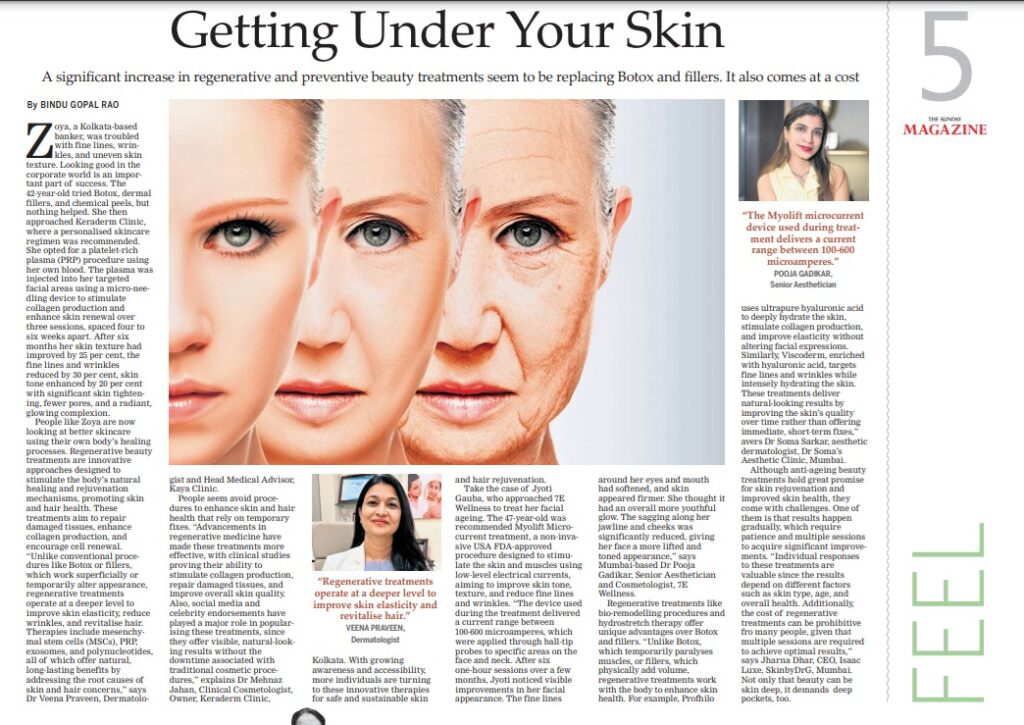
Regenerative beauty treatments focus on enhancing the skin’s natural ability to repair, restore, and rejuvenate itself. Unlike traditional cosmetic procedures that often target surface-level issues, these treatments work at a cellular level to improve skin health and appearance from within. They use advanced techniques and materials, such as exosomes, polynucleotides, and plasma, to stimulate collagen production, improve skin elasticity, and encourage tissue regeneration. By addressing the root causes of skin aging, like reduced collagen or damaged cells, these treatments aim to deliver longer-lasting results that improve skin texture, hydration, and overall radiance. Popular methods include platelet-rich plasma (PRP) therapy, where the patient’s own blood is used to extract growth factors that promote healing, and bio-remodeling procedures like Profhilo, which hydrate and firm the skin. Regenerative treatments are valued for being minimally invasive and focusing on holistic rejuvenation rather than temporary fixes.
The rise of exosomes, polynucleotides, and plasma therapy in beauty treatments shoots from progress in science and a growing preference for minimally invasive, natural-looking solutions. Exosomes, which are tiny cellular messengers, help transfer growth factors and repair signals to damaged cells. They are gaining traction because they deliver targeted, effective results without surgery. Polynucleotides are derived from DNA and help repair skin by improving hydration and elasticity. Their growing popularity is due to their ability to restore the skin’s structural integrity. Similarly, plasma therapy, which uses growth factors from the patient’s blood, has become well-known for its ability to rejuvenate the skin naturally. The shift towards regenerative treatments is also driven by consumer demand for safer, more sustainable options with fewer side effects.
Patients regularly undergo treatments like Profhilo, exosomes, PRP therapy, and polynucleotide (PDR) in my clinic, and this field is evolving. Exosomes and polynucleotides are relatively new, with limited conditioned or unconditioned media available for preparing serums, and more studies are needed. While testing these newer treatments, full-proof options like PRP and Profhilo remain the most common. Profhilo, a bio-stimulating filler, delivers sure-shot results, improving skin texture, tone, and fine lines, especially for the neck region. Patients prefer treatments with visible results, and many return for repeat sessions.
Exosomes and polynucleotides are gaining popularity for under-eye dark circles and post-procedure healing. For example, after CO2 laser treatments, exosomes shorten healing time, reduce post-inflammatory hyperpigmentation, and minimize issues with aggressive procedures. These are often combined with polynucleotides for enhanced results.
Profhilo is now used more frequently in the clinic compared to earlier, while new options like PDR and exosomes are being introduced. However, there’s much to learn, especially about exosomes, which can be plant-based, animal-based, or human-based. In India or globally, we cannot use human blood as it is not legally allowed. Rose stem cells are widely used as plant exosomes. Animal-based options are not suitable because they do not match human cell lines. Further research is needed to optimise these advancements and integrate them effectively into practice.
Read the full story that first appeared in The New Indian Express dated March 3, 2025 here:


Leave a Reply